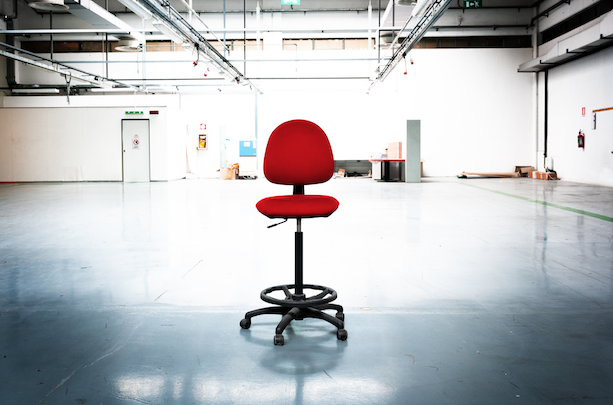3 Office Relocation Mistakes to Avoid in Tampa
17 Sep 2021

Moving your workspace? Relocating to a new office?
For most companies, an office move – regardless of size or complexity – can be both exciting and nerve wracking.
Moving to a new office can energize a company and its employees. It’s like turning the calendar to January and that fresh start makes everyone hopeful and rejuvenated. But in order to get there, there are hurdles that need to be jumped and mistakes to be avoided.
So, what are the mistakes that companies need to avoid when relocation their office space?
The main ones are:
- Improper planning before and during the move
- Not thinking about special requirements of the move
- Not considering what happens next
Lack of planning
As we said, an office move can be complex. If you’re managing the move, you’ll learn quickly that there are a lot of ‘moving parts’ and timelines that need to be effectively managed for everything to go smoothly.
Here are some things to consider in order to avoid moving mishaps.
Vetting and hiring a commercial moving company. This can take time. It’s a good idea to talk to 2-3 moving companies. They’ll want to assess your current and new space and will be able to offer insight to help the move run efficiently. You can get a feel for how each company works, ask them questions and get estimates that you can compare.
*Note: it’s important to use a commercial moving company that has experience relocating office furniture and working within commercial workspaces. Your local residential movers are great with lifting boxes, but will be wholly unprepared to disassemble workstations and cubicles and correctly reassemble them in the new space.
Working with your IT company. Larger companies who are moving will likely need an IT expert to help them identify the best approach for the transition. Will the IT company transport the phone systems and computers? Will that be left to the movers? How are you best able to maintain constant communication with customers with phone and email while the move is occurring. These are all questions (and answers) that can be provided by both the IT company or the moving company.
Managing schedules. Someone will need to think through how clients will need to interact with your company if you have clients or customers who regularly come into your office or location. This is important with retailers who are moving, law firms, medical offices, marketing agencies and many other organizations.
Switching utilities. It’s important to map out what utilities need to be stopped, which need to be transitioned and which need to be started up in the new space. It’s not uncommon for companies to move over a weekend and when employees show up on Monday, there’s no internet service, or lights or air conditioning. Working with a competent commercial realtor can be helpful here.
Make sure employees are kept up to date. We find that it’s not unusual for employees to want to move their own personal items – pictures, plants, coffee mugs, files, etc. You’ll want to make sure employees know when they should start taking things home with them. You’ll want to make sure they’re aware of what the movers will move and what they won’t.
Further reading:
The complete guide to the smoothest office move.
5 tips to make your office move stress-free.
Step by step office moving checklist.
Not considering special requirements
With a move, there is a lot to keep in mind. One element of a move that is sometimes missed is not considering the special requirements of your new space. This could take a variety of forms, but here are the most common reasons you might run into problems.
Your furniture won’t fit. This may fit under the lack of planning category, but it’s not unusual to find that your furniture won’t fit the new space. Desks are too large for offices. Your workstations don’t allow for clear walkways around the office. You’re not able to fit as many employees into a space as you first thought.
It’s always best to do workspace planning prior to the move. Your commercial realtor should be able to help. Office furniture companies that you may be working with should provide this service. And certainly, if the office relocation firm is aware of the new space, they could provide input as well.
Stairs, elevators, oh my! Stairs and elevators can create moving issues. The can slow down move times if they were not anticipated. Potentially, some furniture may not be able to fit within the stairwells or the elevator. Good communication between the person responsible for the move and your office moving company representative should alleviate these issues.
Additionally, you’ll want to make sure that if you’re moving into an office building, that there are loading/unloading areas and that you’ll have access to the space at the day and time you want to move. We’ve been on moves before where the moving trucks had to offload furniture down the street and around the corner from the actual building. We’ve also arrived with fully loaded trucks to find that the persona managing the move didn’t have access to the building or was locked out (which can happen on weekend and after hours moves).
Work from home. Today’s office moves (in 2020, 2021 and beyond) have introduced a new wrinkle into office space planning requirement. The work from home movement (wfh) along with the impact of the Covid pandemic has challenged business owners to more clearly think through how they’re going to utilize their office space.
Who’s working from home. Are we requiring a mix of work at home and in-office work? How will we handle the ebb and flow of employees throughout a work week and will we need all the space we once used? Can we use the new space more effectively? Will offices or workstations be shared.
Again, some of this comes down to pre-planning (or not considering what happens next), but if we’ve learned anything this past year or so, even the best laid plans will have to be adjusted.
Further reading:
As offices reopen, hybrid onsite and remote work becomes routine.
Reimagining the office and work life after Covid-19.
Not considering what happens next
Once a move is complete, it’s all over right – there’s no more to manage?
Not quite.
Tie up loose ends on the old space. Make people aware you’ve moved. This is often a large task. Your website needs to be updated. Email signatures. Forms, business cards and marketing collateral. Even your Google My Business account or listing on Apple Maps! You want to let clients, customers, partners and vendors know about your move – both before and after the move.
You’ll also want to make sure you’ve met the requirements of your lease on the old space (like building cleanouts) and are abiding by requirements on the new space.
Organize, buy new furniture, accessories – like moving into a new home, you realize that there are still things that will need to be purchased, leased or built for the new space.
What about leftover furniture that won’t have a use in the new place? If you’ve not already liquidated the furniture (a fancy industry term for getting rid of furniture through a sale, donation or sending to the dump) you’ll want to do that now. Often, furniture that was intended for the new space just doesn’t work in the new space and will have to be gotten rid of somehow.
Moving on
While this short article addresses some common things to avoid on your next office relocation, it doesn’t cover everything. If in doubt, start planning early and involve multiple employees to make sure your move is a success.
If help is needed with commercial relocation or even internal office reconfigurations, please contact Office Movers of Florida today. We’d be happy to assist you with your move.




